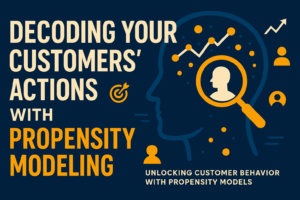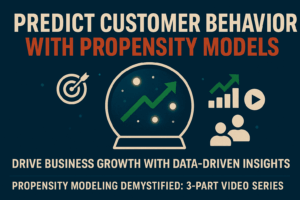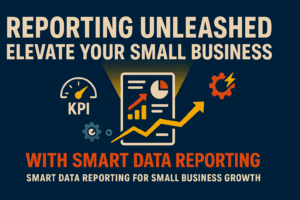Propensity models are a group of statistical models that provide immense value to your organization.
Read MoreCustomer Segmentation For B2C Businesses
One of the best ways to optimize your marketing and sales efforts is to segment your customers and leads. Segmentation is the grouping of customers by similar characteristics. These characteristics can range from age to customer value. Moving on from the general definition of segmentation, we will now focus on why you should use segmentation.
Why should you use segmentation?
Segmentation allows marketers to tailor their marketing efforts to audience segments. This is practicing the Pareto principle, by focusing on efforts that will work best for a given customer group you can maximize your marketing.
Segmentation can be used to do the following:
- Create messages that resonate with specific customers
- Select the best channel for communicating (email, phone, social media)
- Focusing effort on profitable customers
- Identify upsell and cross sell opportunities
Hopefully, the uses above can get your mind working on some ways you can use segmentation in your marketing to increase the efficiency of your business. Now we need to focus on how to get this segmentation done.
How do you implement segmentation?
The first and most important piece of working with segmentation is to make sure you have the necessary data in place. If you want to focus on profitable customers you will probably want to collect purchase and demographic information.
If you are looking to group customers on what they like you might collect surveys or what products they purchased. The point here is you need to track the data necessary to segment before you decide to segment. Having clean usable data will allow your segmentation to be more powerful and provide greater benefit to your bottom line.
With the data collected the next step is to to work with an analyst to analyze the data. There are a multitude of ways to segment your customers, such as propensity models, RFM analysis, heuristic approaches and more. Using a resource that has experience in segmentation will keep you from getting overwhelmed with the possible solutions.
After the segmentation approach is selected you will need to do two things. The first is to decide how you will use the segmentation. If you segment your customers by profitability, what can you do with that? The solution may be to provide a different sales service to your premium customer group.
The second thing you need to do is set up a strategy to test and report if your process is working. How do you know the premium customer sales strategy is actually providing higher value for your business. To prove this you will need to define success criteria and build a proper test that shows you the difference between the strategy versus not doing the strategy.
This is where a marketing analytics consultant is worth their weight in gold. They can provide you with guidance on how to implement everything in this section.
Below are some examples of actual projects CDA has completed using segmentation. These should give you an idea of how segmentation works and why it is useful.
Examples
A retail business uses LTV and churn propensity models to segment customers to determine which high value customers should be included in a retention program. This increases revenue by keeping valuable customers engaged with the customer.
An insurance sales team segments sales leads by prioritizing leads that are most likely to pick up the phone when they make their outbound calls. This optimization strategy led to a 10% increase in contacts.
An ecommerce business uses segmentation to group customers into affinity groups. These affinity groups are upsold and cross sold specific products that best fit their interests. This leads to higher conversion rates on these offers and an increase in profitability of these customers.
Related Articles We Think You Would Enjoy Next
Propensity Modeling Demystified: Predicting Customer Behavior for Growth (Video Series)
A three video series that explores propensity models.
Read MoreReporting Unleashed: Elevate Your Small Business with SMART Data Reporting
Reporting is often the most overlooked piece of data analytics. Reporting is the key cog in the data analytics.
Read MoreIf you are looking to utilize segmentation allow cda to lay the groundwork by providing a holistic strategy to implement, track, and verify your segmentation strategy.


